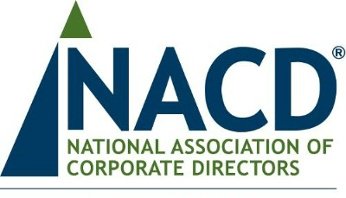
In my new book on managing talent risk (get your copy here), I want to set a clear standard for how corporate leaders can talk to each other about talent risk. It is clear that this conversation needs to start from the Board of Directors, then pass thru the C Suite all the way down to front line leaders. The recent i4cp research makes it clear that the main reason this isn’t happening already is because leaders don’t have a process for analyzing talent risk.
We have a clear solution to that problem that lines up perfectly with guidance on the topic from the National Association of Corporate Directors. Their Blue Ribbon Commission is an ideal guideline for every board member and the executives who interact with them to read and follow. Here are their conclusions in 10 bullets:
FROM THE BRC REPORT
- To meet future challenges, successful organizations establish multi-year, multi-level internal pipelines of talent. It is vital that the board recognizes that talent, strategy and risk are inexorably linked.
- Oversight of the company’s talent development efforts should be a full board responsibility, with the actual planning and execution owned by management. The standing board committees can oversee the talent development associated with their respective areas of oversight.
- The full board should view human capital through the lens of strategy and risk,with committees providing input to the board on talent development in their respective areas as appropriate. In addition to reviewing the talent factor related to every strategic initiative, the board agenda should allocate time – at least annually – to take a deep dive into human capital development.
- Directors should request that management provide a talent component in every strategic initiative presented to the board. Just as an institution is built on the flow of talent upward and across the organization, oversight can be viewed as cascading downward. The talent discussion must be ongoing and supported by a variety of metrics.
- To ensure that talent receives the necessary time and focus, boards should consider drafting talent oversight and succession planning into official corporate documents such as corporate governance guidelines, board and committee charters or proxy statements.
- The company’s hiring philosophy, employee retention and incentive programs, and corporate culture should all align to support a robust talent pipeline and long-term talent strategy. Company size and stage of growth are critical factors in establishing a hiring philosophy as smaller companies may find it more challenging to rely on the same hiring strategy as larger companies.
- On-boarding programs are necessary for all employees, whether they are internal promotions or external hires. Mentoring programs can provide critical support and nurture employee development.
- The Human Resources function should serve as a strategic architect for talent development – supporting business units and functions in the development of their respective talent pipelines. The relationship between the board and the Chief HR Officer or other leader needs to be strong and based upon candor and accountability.
- CEO succession planning should be a continuous and rigorous process; the board should begin identifying potential successors soon after a new CEO is selected. While the average CEO tenure is currently about five years, the board should view succession planning as continuous, rather than dedicated to an expected transition.
- Third-party perspectives can help the board ensure objective CEO succession. Board oversight of this process needs to go beyond organizational charts and dashboards that are often subject to political and emotional issues, which can become blind spots for directors.
